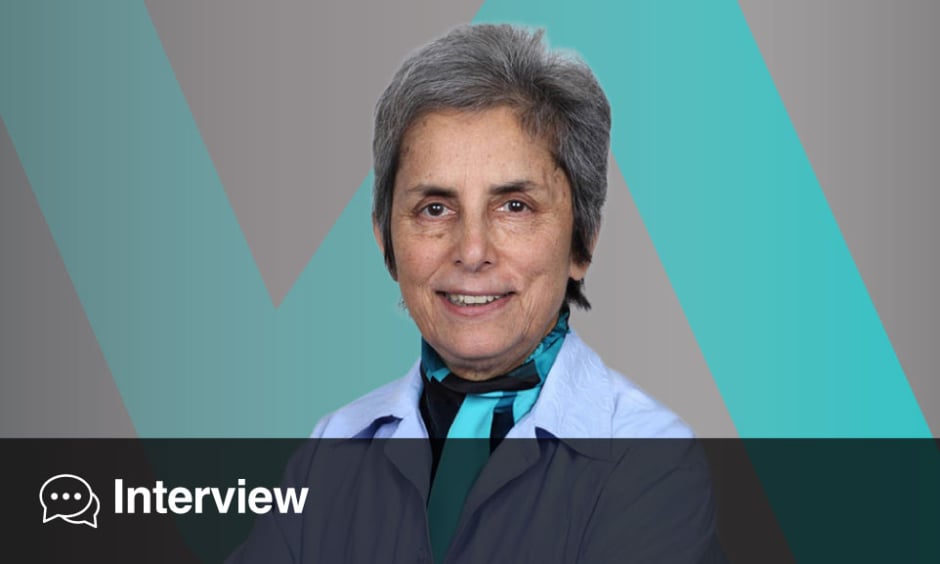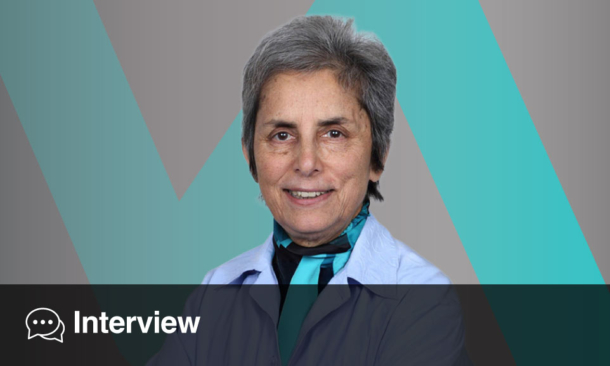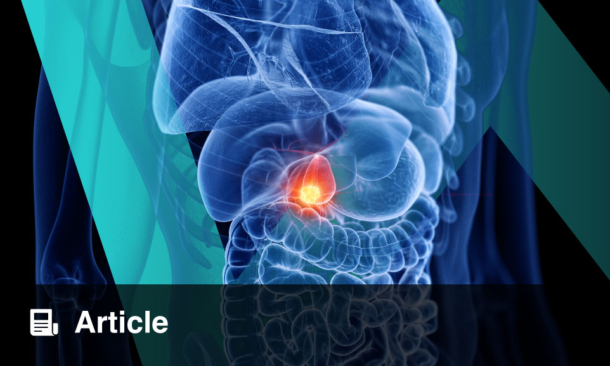The following highlights spotlight the latest advances in gastroenterology, featuring studies and insights presented at this year’s United European Gastroenterology (UEG) Week 2025. From innovative AI techniques and microbiome research to emerging therapies for ulcerative colitis and irritable bowel disease, these summaries capture the most cutting-edge developments and conversations shaping the field today.
Citation: EMJ Gastroenterol. 2025;14[1]:37-46. https://doi.org/10.33590/emjgastroenterol/HAJJ9487
![]()
AI System Enhances Colorectal Biopsy Quality Control by Detecting Key Histological Artifacts
RESEARCH presented at UEG Week 2025 demonstrated a new AI system that has been developed to improve the quality control of colorectal biopsy samples by automatically identifying histological artefacts such as tissue fragmentation, haemorrhage, and excess muscularis mucosa (MM).1
These artefacts, common in colorectal pinch biopsies, can obscure or distort microscopic features essential for accurate diagnosis of inflammatory bowel disease (IBD). While existing digital pathology tools focus primarily on detecting laboratory or staining errors, they often fail to assess these structural features that directly impact slide adequacy and diagnostic confidence. The proposed deep learning approach aims to bridge this gap, streamlining both sample quality assessment and the histopathologist’s evaluation process.
The research team trained convolutional neural network segmentation models on haematoxylin and eosin-stained whole slide images from 52 manually annotated colorectal biopsies. Using a human-in-the-loop training strategy, they generated over 5,000 image–annotation pairs for MM and nearly 4,000 for blood, applying data augmentations and custom postprocessing to refine accuracy. The UNet++ model achieved robust differentiation between MM and blood, which often share overlapping visual characteristics under the microscope.
In validation across 129 patients with IBD, the AI model demonstrated strong performance in segmenting key tissue components. Quantitative analysis revealed that MM occupied an average of 11.6%±10.9% of biopsy section area across 594 whole slide images, while blood was primarily distributed in the lamina propria. A tissue fragmentation score was also introduced and applied to 317 biopsies, successfully identifying damaged or degraded tissue regions that could compromise interpretation. Importantly, the MM model provided visual cues for assessing biopsy orientation and crypt shortfall, while the blood model helped detect sampling-related injury.
Overall, the study demonstrated that AI-driven tissue evaluation can offer a more comprehensive and objective approach to pathology quality control. By flagging suboptimal samples and quantifying structural artefacts often overlooked by conventional QC systems, the tool has potential applications in guiding re-cuts, improving standardisation across laboratories, and enhancing diagnostic accuracy in IBD and other colorectal conditions.
Consensus Reached on Ultrasound Use After Crohn’s Surgery
INTESTINAL ultrasound (IUS) is increasingly recognised as a non-invasive method for monitoring inflammatory bowel disease, but its role in detecting postoperative recurrence of Crohn’s disease has been uncertain. A new international consensus presented at UEG Week 2025 has now outlined clear recommendations for its clinical use following surgery.2
An international panel of 16 experts, including gastroenterologists, surgeons, radiologists, and methodologists, used the modified RAND–University of California Los Angeles (UCLA) appropriateness method to develop these guidelines. A systematic literature review informed the creation of 122 statements on when, where, and how IUS should be applied after surgery.
Experts rated each statement on a nine-point scale for appropriateness in two rounds of anonymous voting. Results were discussed in videoconferences and finalised at an in-person meeting. The process focused on evaluating the anastomosis, neoterminal ileum (NTI), and adjacent segments after ileocaecal resection.
Ultimately, 80% of the statements were judged appropriate with agreement. Findings in the NTI and its inlet were considered most reflective of disease recurrence. The panel agreed that IUS should not be performed within 4 weeks of surgery, as healing changes could mimic inflammation.
The full anastomotic complex, including colonic and ileal blind ends and the NTI inlet, should be assessed when visible. Parameters such as bowel wall thickness, stratification, Doppler vascularity, mesenteric fat, lymphadenopathy, peristalsis, and strictures were all endorsed as relevant markers of recurrence.
The recommendations also advise that IUS assessments be performed by trained sonographers, without bowel purge or intravenous contrast, and that visibility and image quality be documented clearly.
This consensus provides the first internationally guided framework for using IUS to assess postoperative Crohn’s disease recurrence. By standardising sonographic parameters and timing, the guidance aims to improve diagnostic accuracy and consistency in postoperative disease monitoring across centres.
Umbilical Cord Mesenchymal Stem Cells for Gut Immune Disorders
THE RESULTS of a recent study, presented at UEG Week 2025, have demonstrated the therapeutic potential of mesenchymal stem cells (MSC) in various immune-mediated gastrointestinal conditions.3
MSCs are known to influence immune tolerance, particularly through the induction of regulatory T cells (Tregs). However, their clinical effectiveness has historically varied between disorders, prompting the need to clarify when and how MSCs work best.
A large meta-analysis incorporating 79 clinical trials involving 4,710 patients with steroid-refractory graft-versus-host disease (GVHD) compared outcomes based on the source of MSCs, treatment timing, and disease severity. The findings showed that umbilical cord-derived MSCs provided notably improved 1-year survival rates compared with bone marrow-derived MSCs (76% versus 47%). Early administration, particularly within 48 hours of diagnosis, was associated with the strongest therapeutic responses, especially in paediatric patients.
To explore relevance beyond GVHD, the study also assessed MSCs in a preclinical model of inflammatory bowel disease (IBD).In a murine model of chemically induced colitis, treatment with human umbilical cord-derived MSCs led to a 67% reductionin disease severity and a 3.2-fold increase in colonic Foxp3+ Treg cells. Further analysis demonstrated that priming MSCs with IFN-γ before administration amplified their immunosuppressive activity, driven by increased expression of IDO and PGE2, two molecules central toimmune regulation.
The findings suggest that the success of MSC therapy is highly condition-specific and depends on three crucial factors: the source of MSCs, the timing of administration, and whether the cells are primed for enhanced immunomodulatory function. In particular, umbilical cord-derived MSCs appear well suited for both acute GVHD and inflammatory bowel disease when delivered early and after inflammatory priming. These results support the development of Phase II clinical trials to evaluate IFN-γ-primed umbilical cord MSCs in immune-mediated gastrointestinal conditions.
New Evidence Supports Mirikizumab for Resistant Ulcerative Colitis
NEW real-world data from Spanish hospitals have revealed encouraging short-term effectiveness and safety of mirikizumab (MIRI) in ulcerative colitis (UC) care. The study, presented at UEG Week 2025, strengthens confidence that this biologic can benefit patients even outside clinical trial settings.4
Researchers aimed to verify whether the success of MIRI in pivotal LUCENT trials could be replicated in daily clinical practice. They analysed data from the ENEIDA registry, focusing on adults with UC who had not undergone colectomy and who were given MIRI as part of their treatment. Disease activity was measured using the partial Mayo score (pMS), with clinical remission defined as a pMS of 2 or less, no subscore above 1, and no rectal bleeding at Weeks 8 and 12.
The study included 171 patients from 43 hospitals across Spain, with a mean age of 49.5 years and a median disease duration of 128 months. Of these, 54% were male and 62% had extensive colitis. Most participants had received prior advanced therapies: 89% anti-TNF, 69% vedolizumab, 54% ustekinumab, and 40% JAK inhibitors. At baseline, the median pMS was 5 (interquartile range: 4–7) and faecal calprotectin 557 µg/g (interquartile range: 120–1,000).
After starting MIRI 300 mg intravenously every 4 weeks, clinical response and remission at Week 8 were 44% and 26%, respectively, increasing to 45% and 30% by Week 12. Patients exposed to only one mechanism of action (MoA) had notably higher remission rates (65%) than those exposed to two (25%) or more (27%) MoAs (p=0.04, p=0.02). Faecal calprotectin significantly dropped to 160 µg/g at Week 12 (p=0.001). Hospitalisation and colectomy rates were low (5.8% and 1.7%), and adverse events occurred in 10% of patients, with only one serious case.
These findings suggest that MIRI is both effective and well tolerated in real-world UC management, particularly for patients with limited prior exposure to advanced therapies. Continued long-term monitoring will help confirm sustained efficacy and further define its place in treatment algorithms.
Nationwide Trends Show Increased Low-Grade Dysplasia in Inflammatory Bowel Disease
A RECENT study, presented at UEG Week 2025, has highlighted new nationwide evidence on temporal trends in dysplasia among individuals living with inflammatory bowel disease (IBD).5
Low-grade dysplasia has long been recognised as a precursor to more advanced neoplastic change, including high-grade dysplasia and colorectal cancer. However, how incidence rates of dysplasia have evolved over time in real-world clinical populations has remained unclear.
This Danish nationwide cohort study analysed healthcare registry data spanning 1990–2022, covering more than three decades of IBD care. Age-adjusted annual incidence rates of IBD-related dysplasia were calculated, and incidence rate ratios were estimated using a Poisson approximation. Importantly, figures were weighted to reflect the national age distribution as of 2022, ensuring contemporary relevance.
The key finding was a significant increase in low-grade dysplasia incidence rates over time, particularly after the introduction of Denmark’s national colorectal cancer screening programme in 2014. This rise did not coincide with a proportional increase in high-grade dysplasia or colorectal cancer incidence, which have remained generally stable or plateaued.
These trends carry meaningful clinical implications. Increased detection of low-grade dysplasia may reflect improvements in endoscopic surveillance quality, greater awareness of dysplasia risk among clinicians, and the broader adoption of chromoendoscopy and high-definition imaging. Simultaneously, stable rates of advanced disease may indicate earlier intervention and more proactive monitoring in IBD management pathways.
For gastroenterologists and IBD specialists, these findings reinforce the importance of consistent surveillance, careful histological assessment, and timely multidisciplinary discussion when low-grade dysplasia is identified. They also suggest that screening and surveillance strategies may be succeeding in identifying dysplasia earlier, potentially preventing progression to cancer.
As dysplasia surveillance techniques continue to evolve, findings such as these support ongoing refinement of clinical pathways to reduce long-term colorectal cancer risk in IBD.
Study Reveals Diagnostic Gaps Between Men and Women in Inflammatory Bowel Disease
NEW research, presented at UEG Week 2025, has revealed that women with inflammatory bowel disease (IBD) are facing significantly longer waits for diagnosis than men. The study highlights that women are also more likely to receive a misdiagnosis, revealing persistent sex-based disparities in IBD care.6
IBD, which includes Crohn’s disease (CD) and ulcerative colitis (UC), affects people of all sexes, but differences in how men and women experience the diagnostic process have rarely been examined systematically. This large-scale analysis sought to uncover potential sex-specific differences in symptom onset, reporting, and the time taken to receive an accurate diagnosis.
The interim analysis drew on data from 1,180 individuals with IBD (770 women and 410 men) across 42 centres in Germany. Participants completed an online survey capturing demographic information, disease characteristics, and details about the diagnostic timeline. All participants were aged 18 or older and had a confirmed diagnosis of UC or CD for at least 3 months.
The analysis showed no significant differences between men and women in the median time to first physician consultation for either CD or UC. For CD, the median time was 3 months in both women (interquartile range [IQR]: 1–12) and men (IQR: 0.5–10; p=0.567).
For UC, women had a median of 2 months (IQR: 0.8–5) and men 1.3 months (IQR: 0.5–4; p=0.091). Similarly, the time from consultation to referral did not differ between sexes. However, women experienced a significantly longer median time from symptom onset to final diagnosis compared with men ([CD: women, 12 months (IQR: 5–48); men, 6.5 months (IQR: 2.5–24); p=0.002]; [UC: women, 5 months (IQR: 2–14.5); men, 3 months (IQR: 1.3–8); p=0.006]). Misdiagnosis was also more common among women (40.4%) than men (34.4%; p=0.044). Furthermore, symptom profiles varied: women with CD were more likely to present with diarrhoea, nausea, or arthralgia, while women with UC more often reported fever or abdominal pain.
The findings highlight the need for heightened clinical awareness of sex-related differences in IBD presentation and diagnostic experiences. Recognising these variations could help clinicians shorten diagnostic delays and reduce misdiagnosis rates, improving outcomes for women with IBD.
Upadacitinib Demonstrates Favourable Safety and Efficacy in Liver Transplant Recipients with Ulcerative Colitis
AN OBSERVATIONAL study presented at UEG Week 2025 has provided encouraging evidence that upadacitinib, a selective JAK1 inhibitor, may be a safe and effective treatment for inflammatory bowel disease (IBD) in patients who have previously undergone liver transplantation for primary sclerosing cholangitis (PSC).7
PSC is a chronic, progressive liver disease strongly linked to IBD, particularly ulcerative colitis (UC), and orthotopic liver transplantation remains the standard treatment for advanced cases. However, managing IBD after transplantation poses a unique clinical challenge due to the limited evidence available on the safety and efficacy of newer therapies such as JAK inhibitors in this population.
The study evaluated five patients (three women and two men) with UC and a history of liver transplantation due to PSC. The median age was 30 years, with an average of 7 years since orthotopic liver transplantation and 12 years since UC diagnosis. Two patients had confirmed recurrence of PSC, reflected by elevated liver function tests. All participants had previously failed biologic therapy with vedolizumab, and one had also failed infliximab treatment.
Upadacitinib was administered at an induction dose of 45 mg daily for 3 months, followed by maintenance therapy of either 30 mg or 45 mg daily. Patients were followed for a median period of 9 months. Corticosteroid therapy was continued in most cases, typically with low-dose prednisolone.
During treatment, all patients showed clinical improvement, with the partial Mayo score dropping from a median of six to two. Endoscopic follow-up confirmed mucosal healing or improvement in nearly all cases. Notably, no significant changes in liver function tests or tacrolimus levels were observed, suggesting that upadacitinib did not interfere with transplant management or immunosuppressive therapy.
Adverse effects were mild and manageable, including acne, upper respiratory tract infections, cytomegalovirus colitis, and a mild case of COVID-19. Importantly, no serious infections or graft-related complications were reported.
These findings indicate that upadacitinib may offer a viable therapeutic option for patients with refractory IBD following liver transplantation, where treatment choices are often limited by safety concerns. Although larger studies are needed to confirm long-term outcomes, this early experience suggests that JAK1 inhibition could safely control intestinal inflammation without compromising liver graft stability or immunosuppressive balance.
Severe Endoscopic Findings Predict Corticosteroid Failure in Acute Severe Colitis
A RETROSPECTIVE study, presented at UEG Week 2025, shed new light on the predictors of corticosteroid treatment failure in patients with acute severe colitis (ASC), a life-threatening complication of inflammatory bowel disease (IBD).8
ACS represents one of the most critical emergencies in IBD, demanding rapid diagnosis and management. While intravenous corticosteroids remain the first-line treatment, approximately one-third of patients fail to respond and require alternative therapies such as infliximab, cyclosporine, or surgery.
The study included 45 adult patients with IBD complicated by ASC, as defined by the Truelove and Witts criteria and a Lichtiger score greater than 10. The average patient age was 37.9 years, with a slight female predominance. Notably, ASC was the initial presentation of IBD in nearly one-third of patients. Almost half of the cohort exhibited severe endoscopic findings at admission, reinforcing the high-risk nature of the condition.
Following intravenous corticosteroid therapy with hydrocortisone hemisuccinate, 64.5% of patients achieved a clinical response, while 24.4% required second-line therapy, either cyclosporine or infliximab. Five patients (11.1%) required subtotal colectomy due to corticosteroid failure.
Univariate analysis revealed several clinical and laboratory factors linked to poor steroid response, including male sex, absence of extraintestinal manifestations, higher stool frequency at baseline, persistent high Lichtiger scores, elevated white blood cell counts, and raised C-reactive protein levels. However, multivariate analysis identified only one independent predictor: persistent severe endoscopic findings after 3–5 days of corticosteroid therapy (odds ratio: 42.2; p=0.028).
These findings suggest that early follow-up endoscopy plays a crucial role in guiding treatment decisions for ASC. Patients showing ongoing endoscopic evidence of severe inflammation after several days of corticosteroid therapy are highly unlikely to respond and should be transitioned promptly to second-line medical or surgical management.
This study reinforces the need for proactive, individualised care strategies and highlights endoscopic monitoring as a valuable tool for improving outcomes in acute IBD flares.







